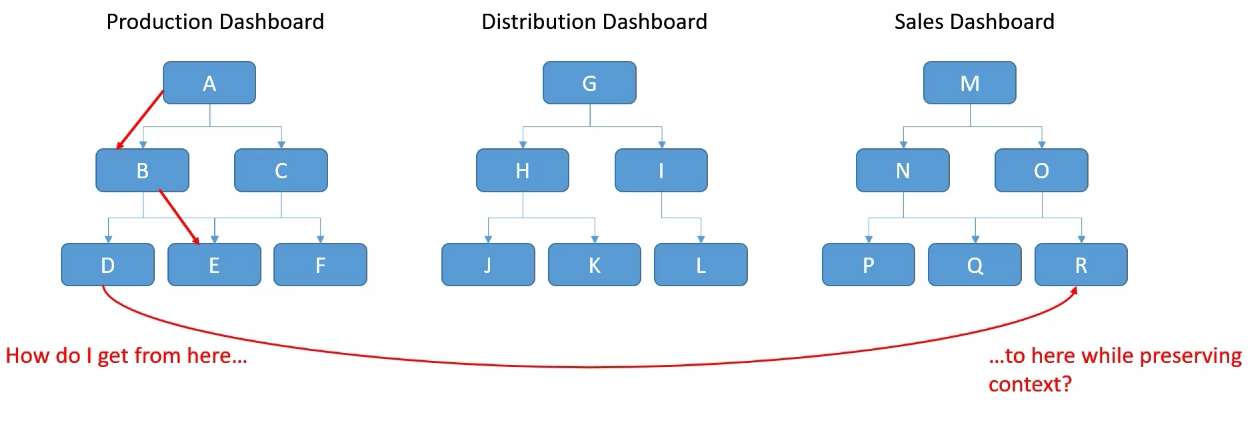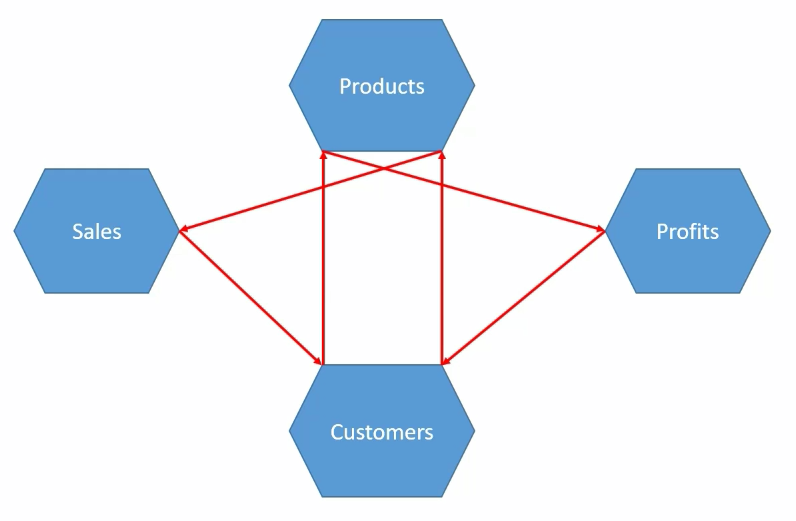Many people see the use of voice in analytics as entirely arbitrary, and as an alternative to mouse or keyboard controls. Some think of it as just a gadget or gimmick to generate attention.
We don’t agree.
Voice has the potential to completely revolutionize how business intelligence (BI) systems are designed, built and used.
The Hard Truth
According to Harvard Business Review (HBR), the biggest obstacle to using advanced data analysis isn’t skill base or technology; it’s plain old access to the data. Depending on the BI system in use, there’s often a process by which data is retrieved and then made actionable, and it follows a linear path such as, formatting, filtering and manipulation. To add insult to injury, each new problem has new requirements and unique aspects, which force the system user to reach back into data acquisition and preparation, and drive the amount of time spent in prep, up and up.
Making matters worse, is, as HBR so eloquently noted, the bigger demon that’s ever-present: data silos.
The majority of BI systems are siloed, and more often than not, each department or division has its own set of dashboards. In addition to this, as BI systems are for the most part structurally designed for specific groups within a company, there is a greater focus on function over data sharing, so each dashboard likely possesses its own predestined set of navigation paths.

Take the image above for example:
In a typical BI system, it’s possible to navigate within the Production Dashboard from A to B, and B to E, but not from D in the Production Dashboard to R in the Sales Dashboard, while still preserving context.
It’s also difficult, if not impossible, to cover the entire data pool, as the likelihood of navigating to every nook and cranny of it is simply unfeasible.
The Power of Voice
Enter voice.
The objective of voice in analytics is clear; to enable users to enter the data pool at any point; to have them access any other data point in any sequence; and to have the user’s mind, and not the structural interface of the BI system, dictate how the analysis is to proceed. This is where voice and voice-driven analytics become relevant.
Simply put, voice-driven analytics is the concept of interacting with data simply by using one’s voice. But there is so much more than merely interacting with data using strictly verbal cues. A voice-driven analytics system should, above all else, allow the user to find answers faster.
It’s generally acknowledged that there are multiple potential views (dashboards/reports/etc.) of many entities (objects represented by data) inside most companies. Those views often need to change based on where the user is coming from and what their role is, because each of those factors effects the context.
“Asking for product category breakdown when looking at sales data, is inherently different than asking for product category breakdown of say, production cost”
– Wayne Williams, CTO, Profunda Analytics
What this manner of thinking has led to, is a completely different design model when it comes to building BI systems. Instead of building interfaces to play specific roles in rigid, pre-planned structures such as this…

… Solutions are being built with each interface being designed on its own, as a stand-alone black-box, with a public API, that exposes the parameters it accepts, and views that it offers. Where any interface, can call any other interface, in any order, so long as it passes sufficient information, to allow the new interface to configure itself.
In other words, structures are being created that now allow users to ask questions across multiple domains in the logical order they would when analyzing data, rather than in a pre-defined order that was created as part of their BI systems.

By using voice as the primary navigation tool, and Dundas BI as the platform that powers it, this type of solution eliminates the need to incorporate scores of navigational controls on every interface. This allows BI systems to be built quicker than if traditional approaches were used.
More importantly, this allows users to find answers much faster.
Putting Voice-Driven Analytics into Context
It is important to understand that the usage of voice or natural language to ask questions is not a unique concept within BI systems. Rather, it is the power of the aforementioned specific type of solution that allows you to carry the context of your first question, into the next question and so forth. These types of voice-driven analytics solutions are incredibly valuable as they don’t require users to begin their analysis from scratch as they dive deeper into the analytical process.
Besides breaking navigation barriers, these voice-driven analytics solutions present other benefits, such as enabling users to ask complex questions that normally would require extensive pointing-and-clicking and occasionally additional data prep that can’t be easily done on the visual interface.
The ability to keep the context as you keep on asking deeper questions along with those other benefits is what renders these solutions to be so powerful – want to see it in action and better understand how it works?
Voice-Driven Analytics with Profunda Analytics
Profunda Analytics is on a mission to empower users to freely navigate their data without constraints. They build voice-controlled business intelligence systems that offer users unparalleled freedom to explore and analyze their data, completely free of the hierarchical constraints imposed by most BI systems.
This Knoxville, Tennessee based company is a small start-up that was founded by a BI veteran (CTO Wayne Williams) and a healthcare executive (CEO Alex Stockdale), both who possess a passion for improving healthcare through in-depth analysis of healthcare data.
Profunda Analytics sought to remedy to this gap, and their flagship product, Profunda Voice, delivers on this promise. It leverages the extensible Dundas BI platform to create a powerful interface with three unique qualities:
- Black box, independent dashboards that act more like tools, such as Pivot Analysis, Change Analysis, Trend Analysis, Comparison Tools, etc.
- The ability to freely navigate between these tools in any sequence/combination the user wants, carrying their data along with them and refining it as they go.
- The ability to use voice to navigate and control all this; this is a necessity more than a convenience, because only voice control supports complete freedom of navigation without overwhelming users with screen controls. And fret not, the system also supports convenient keyboard shortcuts for those who often find themselves in noisy environments.
“Finally, we have the ability to weave advanced analytics into everyday interfaces, to make them a routine part of our daily tasks – that’s why we created Profunda”
– Wayne Williams, CTO, Profunda Analytics
End users can ask Profunda questions verbally (or type them), and the system draws the answers in charts, tables, etc., or performs comparisons, simulations, predictions, etc., on the user’s behalf. Whether you require operational analytics with write-backs to transaction systems, behavioral analytics, causal relationships, or text mining, Profunda uses Dundas BI to put actionable insights directly into your hands (or voice).


Follow Us
Support